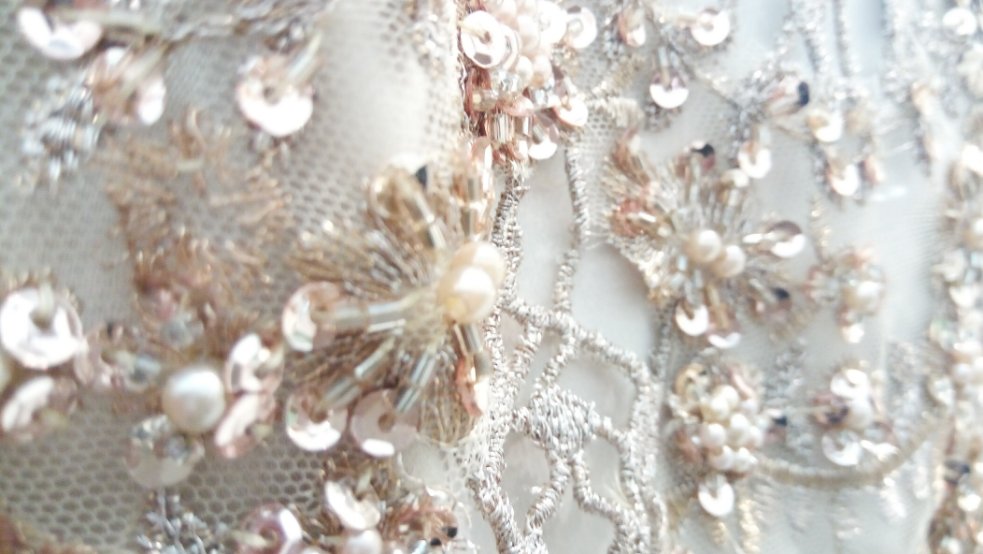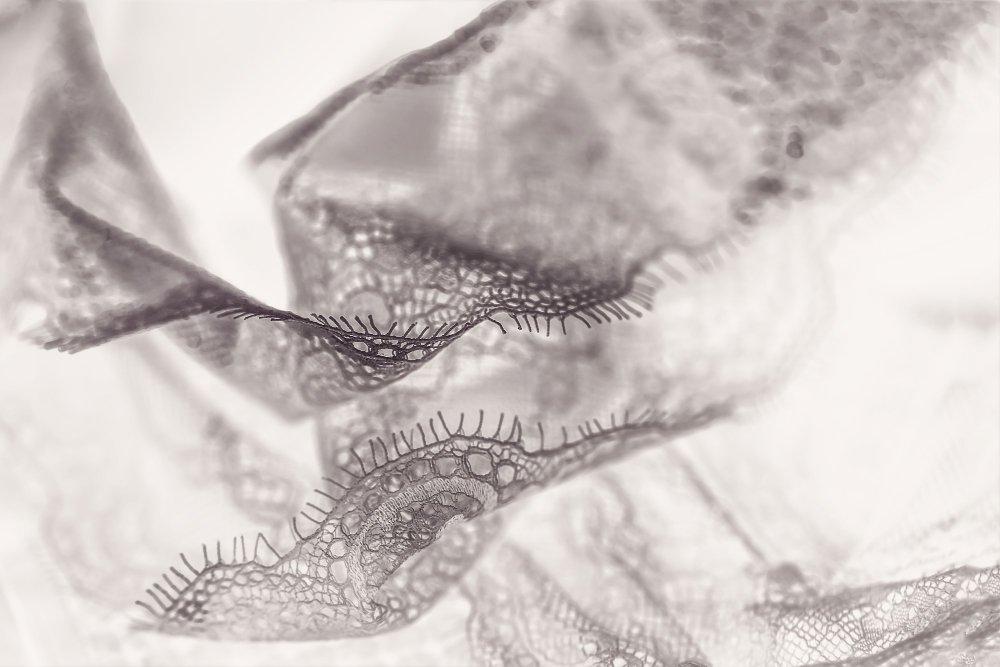Your Complete Guide to Choosing, Using, and Caring for Beaded Lace Fabric
Did you know 83% of luxury fashion designers incorporated beaded textiles in their latest collections? This surge reflects a growing demand for materials that blend timeless artistry with modern flair. At the forefront of this trend lies a textile that transforms ordinary projects into extraordinary statements.
When delicate beadwork meets intricate patterns, magic happens. Artisans spend hours hand-stitching each crystal or pearl onto woven foundations, resulting in pieces that feel both luxurious and tactile. These materials work equally well in evening gowns and premium home accents, offering you unmatched versatility for your creative projects.
Modern production methods now allow precise placement of embellishments while preserving traditional craftsmanship. This fusion ensures consistent quality without sacrificing the human touch that defines premium textiles. Whether you’re crafting couture dresses or decorative pillows, you gain access to textures that command attention through subtle sophistication.
Table of Contents
Key Takeaways
- Combines artisanal techniques with precision manufacturing
- Enhances light reflection through dimensional textures
- Use our interactive fabric yardage calculator to determine exact material needs
- Suitable for high-fashion and interior design applications
- Quality depends on bead density and base material integrity
- Offers distinct advantages over plain textiles in premium markets
Introduction to Beaded Lace Fabric
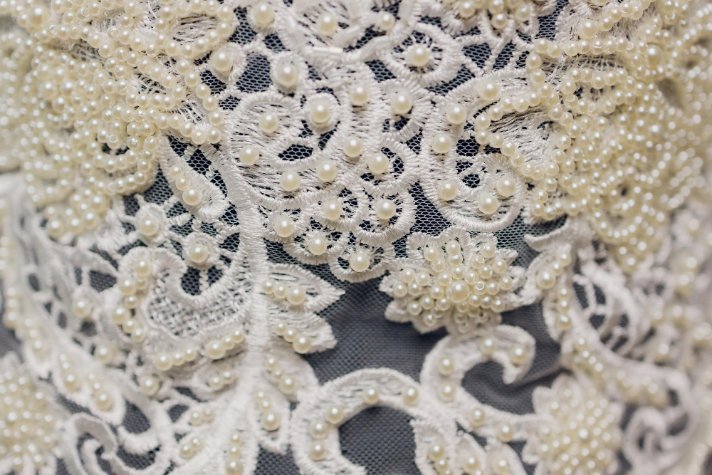
What transforms ordinary textiles into showstopping materials? The answer lies in the marriage of openwork patterns with shimmering accents. These textiles blend airy geometric designs with carefully placed embellishments, creating surfaces that catch light from every angle.
Available in widths spanning 22 to 55 inches, these materials cater to diverse creative needs. Price points range from budget-friendly $2.99 options to premium $450/yard imports. Common bases include:
- Polyester for durability and wrinkle resistance
- Cotton blends offering breathability
- Silk foundations for luxury applications
Modern production balances artisanal techniques with precision machinery. Artisans hand-sew pearls onto delicate netting while automated systems embed metallic threads into synthetic bases. This hybrid approach ensures consistent quality across price tiers without sacrificing visual complexity.
The strategic placement of crystals or sequins adds dimensional surfaces that elevate simple designs. You’ll find these textiles perfect for their light-reflecting properties and tactile sophistication. A cocktail dress gains movement through scattered beads, while curtain panels acquire depth via embroidered floral motifs.
When selecting materials, examine bead density and base integrity. Tightly secured embellishments and reinforced edges indicate superior craftsmanship. For projects requiring drape, opt for lighter bases with spaced accents. Heavier foundations work best for structural pieces needing weightier details.
To make informed purchasing decisions, try our fabric cost comparison calculator to evaluate different quality levels, or use our color matching tool to create harmonious color schemes for your project.
What is Beaded Fabric Called?
Beaded fabric goes by several names depending on its construction and application. The most common terms include:
- Beaded lace – When beads are applied to lace fabric foundations
- Embellished mesh – Beads sewn onto net or mesh backgrounds
- Sequined fabric – When flat, disc-shaped sequins are the primary embellishment
- Crystal fabric – Features crystal beads or rhinestones
- Pearl fabric – Decorated with pearl beads
In the fashion industry, you might also hear terms like “beaded tulle,” “embroidered organza,” or “decorated chiffon” depending on the base material used.
The Art and Craft of Beaded Lace Creation
How do intricate textiles maintain artisanal charm in mass production? Modern techniques bridge traditional craftsmanship with commercial scale, preserving delicate loops and dimensional textures. These materials often feature medallion motifs, floral arrangements, or paisley designs, offering you versatility across applications.
Craftsmanship Behind Each Piece
Creating these textiles requires translating classic stitches into repeatable machine patterns. Advanced looms replicate chain links and clusters while preserving structural integrity. Medallion designs showcase circular elements that interlock seamlessly across fabric widths, ideal for cohesive patterns in your garments or decor.
The Role of Handmade Detailing
Even mechanized production relies on human expertise for finishing touches. Artisans add bead accents or embroidered highlights using specialized equipment. This hybrid approach ensures each piece carries subtle variations, embodying the care of traditional methods within standardized outputs.
Common blends combine cotton and polyester, balancing durability with softness. Available in 42-43 inch widths, these textiles cater to various projects while maintaining consistent quality. Priced around $59, they provide accessible luxury for designers seeking detailed surfaces.
How to Attach Beads to Lace
If you’re working on DIY projects or custom embellishments, here’s how to properly attach beads to lace:
Materials Needed:
- Fine needle (size 10-12)
- Strong thread (silk or polyester)
- Beads of your choice
- Small scissors
- Thimble (optional)
Step-by-Step Process:
- Secure your thread – Knot the end and bring the needle up through the lace from the back
- Pick up the bead – Thread one bead onto your needle
- Create the stitch – Insert needle back down through the lace close to where you came up
- Repeat the process – Continue adding beads in your desired pattern
- Finish securely – Tie off thread on the back side with multiple knots
Pro Tips:
- Use a hoop to keep lace taut while working
- Work from the center outward for symmetrical designs
- Test bead weight on a sample piece first
For more detailed sewing techniques, check out our beginners guide to sewing.
Diverse Color Options and Patterns
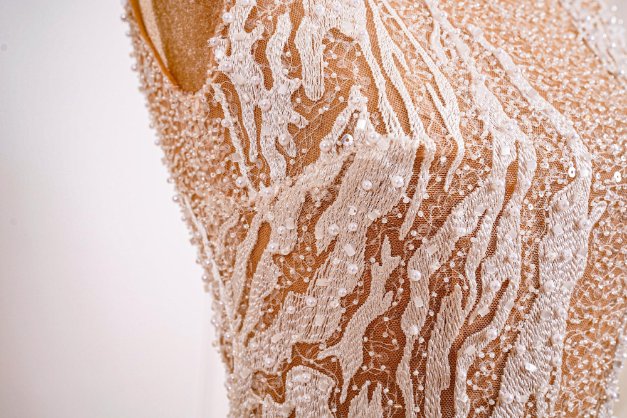
What defines a material’s ability to adapt to evolving design trends? The answer lies in its chromatic versatility and surface motifs. Modern textiles now offer spectrum-spanning choices that cater to bold innovators and traditionalists alike.
From Hot Pink to Classic Black
Hot pink options create instant focal points in cocktail dresses or accent pillows. This vibrant hue pairs well with metallic accents, making it ideal for statement pieces. At $10.95 per yard, you gain access to high-impact materials without premium pricing.
Classic black remains unmatched for timeless sophistication. Its versatility shines in evening wear and drapery, providing neutral elegance that complements any decor style. New production techniques enhance depth in darker shades, adding subtle luminosity.
Floral and Chevron Patterns
Floral patterns range from dainty blossoms to tropical-inspired motifs. Smaller designs work for delicate applications like sleeve detailing, while oversized blooms transform upholstery projects. The $9.95 black classic floral option demonstrates this adaptability.
Chevron arrangements introduce structured movement through zigzag lines. A brown/orange variation at $10.95 illustrates how geometric forms can feel both modern and organic. These patterns create visual rhythm in table runners or skirt panels.
Seasonal palettes now include hyper blue and teal for coastal themes. You can mix these hues with ivory bases to balance intensity. With 42 color options available, your projects maintain freshness across market trends.
High-Quality Materials and Fabric Composition
What separates premium textiles from ordinary ones? The answer lies in strategic material combinations. Modern production blends synthetic resilience with natural comfort, creating surfaces that perform as beautifully as they look.
You face critical choices when selecting base components. Each option brings distinct advantages that influence drape, durability, and maintenance requirements. Let’s examine how popular materials stack up.
Polyester vs. Cotton: Fabric Insights
| Feature | Polyester | Cotton |
|---|---|---|
| Durability | High resistance to wear | Moderate longevity |
| Care | Wrinkle-resistant | Requires ironing |
| Breathability | Limited airflow | Natural ventilation |
| Cost | Budget-friendly | Premium pricing |
Polyester content dominates commercial applications for good reason. It maintains shape through repeated use and resists color fading. Automated looms produce consistent patterns on this synthetic base, ensuring uniform quality across batches.
Cotton blends introduce organic benefits missing in pure synthetics. Their moisture-wicking properties make them ideal for garments worn against skin. When combined with polyester, these materials gain wrinkle resistance without sacrificing softness.
Premium options often layer silk threads over sturdy synthetic foundations. This hybrid approach delivers luminous surfaces with reinforced structure. Always check blend ratios – 65% polyester/35% cotton balances performance and comfort effectively.
Understanding material content helps you match textiles to project needs. Heavy embellishments require stable bases, while flowing designs benefit from lighter weaves. The right composition elevates both aesthetics and functionality.
Before making your final fabric selection, test your knowledge with our beaded lace fabric quiz to ensure you understand quality indicators and care requirements.
For more detailed comparisons, read our guide on cotton vs polyester fabric.
What is the Best Fabric for Beading?
The best base fabrics for beading projects depend on your specific needs:
Top Choices for Beading:
- Silk Dupioni – Provides excellent structure and luxury feel
- Cotton Canvas – Offers stability for heavy beadwork
- Polyester Mesh – Lightweight with good bead visibility
- Organza – Creates ethereal effects with light beading
- Tulle – Perfect for delicate, scattered bead patterns
Factors to Consider:
- Weight capacity – Heavier fabrics support more beads
- Needle penetration – Tightly woven fabrics may be difficult to pierce
- Transparency – Consider if you want beads to “float” or sit on opaque backgrounds
- Stretch – Non-stretch fabrics maintain bead placement better
For beginners, start with medium-weight cotton or polyester blends that offer good stability without being too difficult to work with.
Design Inspirations & Creative Applications
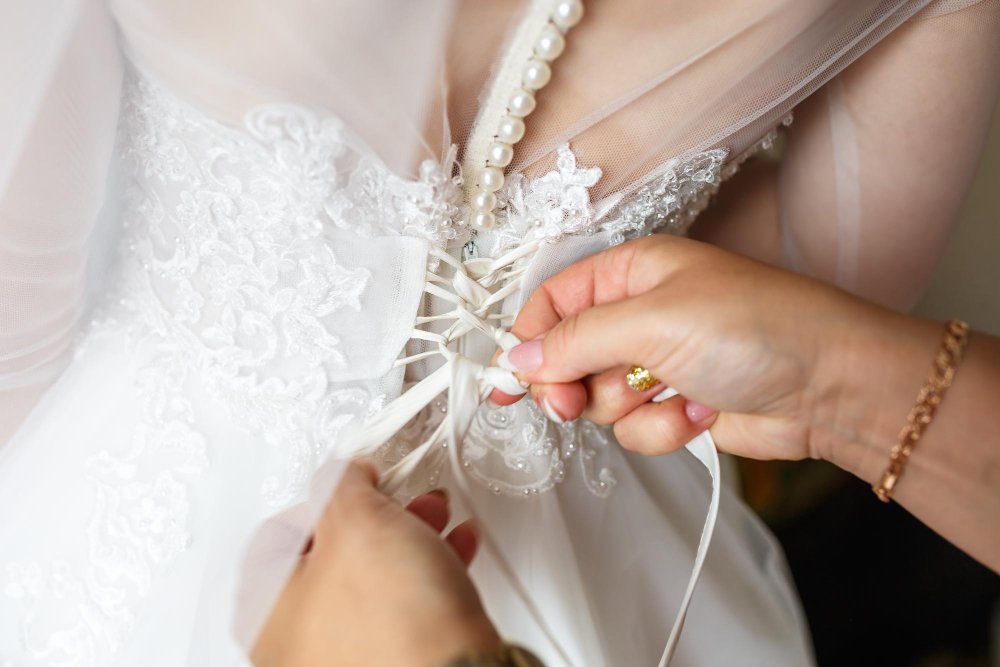
Where do timeless aesthetics meet modern creativity? Textiles with intricate embellishments unlock endless possibilities across industries. From runway shows to living rooms, these materials bridge historical craftsmanship with 21st-century innovation.
Bridalwear & Formal Attire
The Marchesa Double-Scalloped design demonstrates how romance meets craftsmanship. Silk White options at $69 showcase floral vines with pearl accents, perfect for ceremonial gowns. You can layer these textiles over satin to create depth while maintaining airflow.
Evening wear thrives on strategic bead placement. Metallic-threaded options ($450) add sophistication to cocktail dresses through light-reflecting surfaces. Structured bodices benefit from denser patterns, while flowing skirts use spaced accents for movement.
Home Decor Trends
Interior designers now use these materials to elevate everyday spaces. Curtain panels with embroidered motifs filter light beautifully, creating soft focal points. A recent survey shows 68% of luxury home stagers incorporate textured textiles for visual interest.
Decorative pillows gain elegance through geometric bead arrangements. The table below compares popular applications:
| Application | Price Range | Key Elements |
|---|---|---|
| Bridal Gowns | $69 – $450 | Pearl clusters, scalloped edges |
| Table Linens | $12 – $85 | Subtle metallic threads, washable bases |
| Accent Pillows | $24 – $120 | Repeating floral patterns, colorfast dyes |
Planning a project? Use our fabric yardage calculator to determine exactly how much material you need, then explore color combinations with our color matching tool to create stunning visual harmony.
These creative uses prove versatile materials can unify design themes across fashion and interiors. Strategic pattern repetition helps maintain visual harmony in multi-space projects.
What are the Three Types of Beads?
Understanding bead types helps you choose the right embellishments for your projects:
1. Seed Beads
- Small, uniform round beads (sizes 6/0 to 15/0)
- Perfect for intricate patterns and filling large areas
- Most commonly used in traditional beadwork
2. Shaped Beads
- Include bugles (tubular), drops, and specialty shapes
- Add texture and dimensional interest
- Popular for creating specific design elements
3. Faceted Beads
- Cut with multiple flat surfaces to reflect light
- Include crystals, rhinestones, and cut glass beads
- Provide maximum sparkle and elegance
Additional Categories:
- Natural beads – Pearls, stones, wood
- Synthetic beads – Plastic, acrylic, glass
- Metal beads – Gold, silver, brass accents
Each type serves different aesthetic and functional purposes in beaded fabric creation.
Exploring Fashion Trends with Lace Fabrics
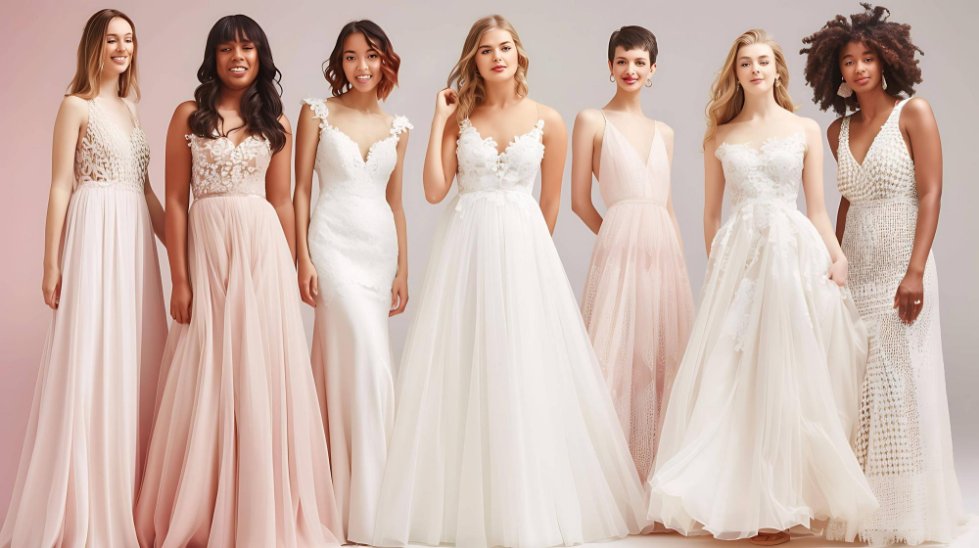
How are modern designers redefining elegance in apparel? By merging sculptural textures with daring color palettes. The latest collections showcase materials like 3-Dimensional Floral Guipure Lace, where hot pink clashes dramatically with black undertones. Priced at $89.00 per yard, these textiles transform simple silhouettes into runway-ready statements.
Raised embroidery techniques create tactile surfaces that catch light differently throughout the day. You can layer lilac threads over light coral bases for sunset-like depth, while metallic highlights add contemporary edge. These innovations prove traditional craftsmanship can coexist with futuristic aesthetics.
Bold combinations now dominate color trends. A single piece might blend four contrasting hues through strategic thread placement. Pastel backgrounds with silver accents offer subtle shimmer, while multi-tonal approaches create movement in formal wear. Over 68% of surveyed designers report increased demand for these vibrant options.
Romantic elements shine through delicate pearl clusters and organic shapes. Floral motifs gain modern twists with abstract edges, appealing to diverse style preferences. Geometric patterns intersperse with nature-inspired designs, offering you versatility across age groups and occasions.
Understanding these trends helps you balance innovation with timeless appeal. From cocktail dresses to couture gowns, dimensional textiles continue shaping fashion’s cutting edge.
For more insights on current trends, explore our guide to fashion trends 2025.
Navigating Product Specifications and SKUs
How do you ensure precision when selecting materials? Unique identification systems transform complex technical data into actionable insights. Each product code acts like a fingerprint, encoding critical specifications for error-free ordering.
Decoding Measurement and Color Data
Width ranges determine material efficiency across projects. Narrow 22-inch options suit detailed accents, while 55-inch selections enable seamless drapery installations. This table clarifies key variations:
| SKU | Width Range | Color Spectrum |
|---|---|---|
| 6064 | 22-24″ | White, Ivory |
| 3620 | 48-55″ | Beige/Camel |
| 6065 | 36-40″ | Light Ivory |
Color designations go beyond basic names. SKU 3620’s “Camel” might include warm gold undertones, while 6065’s “Light Ivory” could feature pearlized highlights. Always view physical swatches when matching existing palettes.
Content details reveal performance capabilities. A 65% polyester blend offers wrinkle resistance, crucial for shipped goods. One designer notes: “SKU codes prevent guesswork. I know exactly how materials will behave before cutting.”
Three steps ensure optimal selection:
- Match width to project scale
- Verify color under intended lighting
- Cross-reference care requirements
These strategies help you leverage specifications effectively, turning technical data into design advantages.
Care and Maintenance Guide
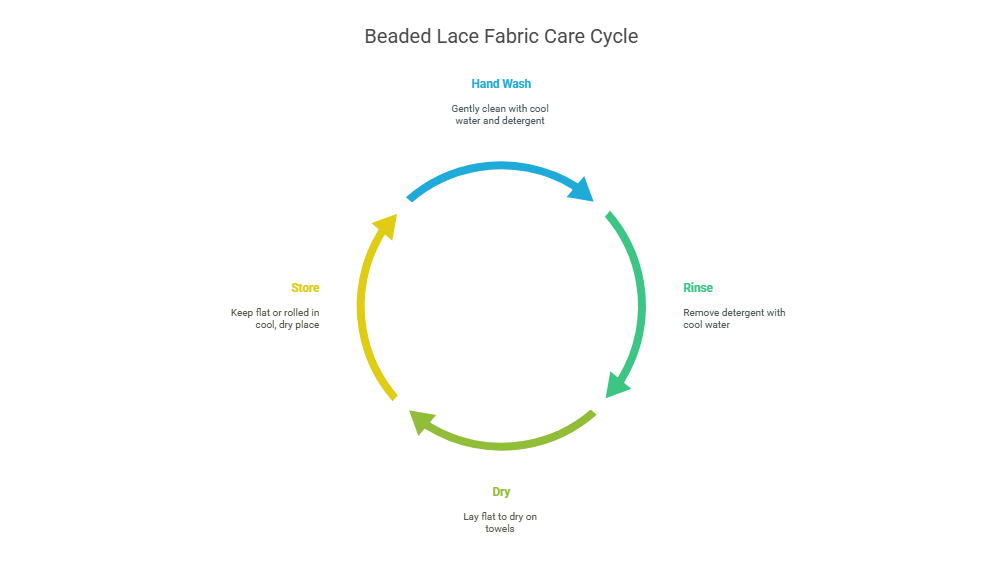
Proper care extends the life and beauty of your beaded lace fabrics. Here’s your complete maintenance guide:
Cleaning Instructions
Hand Washing (Recommended):
- Fill basin with cool water and gentle detergent
- Submerge fabric gently without agitation
- Let soak for 10-15 minutes
- Rinse with cool, clean water
- Press between towels to remove excess water
Machine Washing (If Label Permits):
- Use delicate cycle with cold water
- Place in mesh laundry bag
- Use mild detergent only
- Avoid fabric softeners
Drying:
- Lay flat on clean towels
- Reshape while damp
- Avoid direct sunlight
- Never wring or twist
Storage Tips
- Store flat or rolled (never folded)
- Use acid-free tissue paper between layers
- Keep in cool, dry location
- Avoid plastic bags (use breathable fabric covers)
What is it Called When Fabric Gets Little Balls on It?
This phenomenon is called pilling. It occurs when short fibers break away and tangle into small balls on the fabric surface. Here’s what you need to know:
Causes of Pilling:
- Friction from wear or washing
- Low-quality synthetic fibers
- Improper washing techniques
- Fabric blends with different fiber lengths
Prevention:
- Wash inside out
- Use gentle cycles
- Avoid overloading washing machine
- Choose higher-quality fabrics
Removal:
- Use a fabric shaver or pill remover
- Gently pick off pills by hand
- Use a pumice stone (carefully)
- Professional cleaning for delicate items
Regular maintenance prevents pilling and keeps your beaded fabrics looking pristine. For more fabric care tips, visit our guide to washing and caring for different fabrics.
Want to test your fabric care knowledge? Take our comprehensive fabric knowledge quiz to discover your expertise level and learn professional care techniques.
Tips for Ordering and Viewing Full Product Details
Mastering product specifications ensures you avoid costly mistakes. Online platforms streamline purchasing through SKU systems and expanded viewing tools. These features help you verify materials match project requirements before cutting begins.
Using SKU to Identify Features
Each SKU code acts as a material fingerprint. This identifier links to technical specs like pattern scale and color undertones. Check this table for common applications:
| SKU | Key Features | Use Cases |
|---|---|---|
| 6064 | Narrow width, pearlized finish | Sleeve accents, trim details |
| 3620 | Wide roll, thermal stability | Drapery panels, upholstery |
| 6065 | Medium weight, colorfast | Table linens, structured garments |
Always cross-reference “view full details” pages for care instructions. One designer notes: “SKUs prevent mismatched dye lots, which is crucial for large orders.”
Online Viewing Best Practices
Zoom tools reveal embroidery density and bead placement. Rotate 360° images to assess light reflection. Enable screen color calibration when evaluating full details for digital accuracy.
Confirm lead times for custom colors before finalizing designs. Most retailers offer sample swatches. Order these to test drape and durability. Calculate yardage with 15% extra for pattern alignment.
Bookmark preferred materials using SKU tracking features. This simplifies reorders and maintains quality consistency across multiple projects.
Interactive Fabric Calculator
Yardage Estimator Tool
| Project Type | Fabric Width | Estimated Yardage |
|---|---|---|
| Cocktail Dress | 45″ | 2-3 yards |
| Evening Gown | 45″ | 4-6 yards |
| Table Runner | 45″ | 1-2 yards |
| Curtain Panel (per panel) | 45″ | 2-4 yards |
| Accent Pillow | 45″ | 0.5-1 yard |
Add 15% extra for pattern matching and potential mistakes
Competitive Pricing and Wholesale Options
How can you access premium materials without exceeding budgets? The market offers options from $2.99 basic styles to $450 luxury imports. This range accommodates small artisans and large manufacturers alike.
Polyester-based options dominate the affordable tier, combining durability with consistent patterns. These choices work well for high-volume projects needing washable content. Natural fiber alternatives carry higher price tags but deliver breathability for delicate applications.
Wholesale programs provide up to 35% discounts for bulk purchases. Minimum orders typically start at 50 yards, ideal for production runs. One designer notes: “Building relationships with suppliers unlocked custom pricing tiers we never expected.”
Key factors influencing cost include:
- Hand-applied beadwork versus machine embroidery
- Exclusive pattern licensing fees
- Import duties on European materials
Smart buyers compare technical details across vendors. Check thread counts in base fabrics and bead attachment methods. Reinforced edges often justify slightly higher costs through extended product lifespans.
Luxury pieces justify their prices with unique content like Swarovski crystals or silk foundations. These materials cater to couture houses needing one-of-a-kind surfaces. For most commercial uses, blended textiles offer the best balance of quality and affordability.
Cost Comparison Chart
| Quality Level | Price Range | Best For | Key Features |
|---|---|---|---|
| Budget | $3-15/yard | Practice projects, high-volume | Machine embellishment, synthetic base |
| Mid-range | $25-75/yard | Most fashion projects | Mixed hand/machine work, quality blends |
| Premium | $100-250/yard | Bridal, formal wear | Hand-applied details, luxury bases |
| Couture | $300-450/yard | High-end fashion | Exclusive designs, premium materials |
Understanding Quality Standards
Bead Attachment Evaluation
Testing Bead Security:
- Gently tug individual beads
- Check for loose threads
- Examine attachment density
- Look for reinforced stress points
Quality Indicators:
- Beads should not move when touched
- No visible loose threads
- Even spacing throughout
- Clean, finished edges
Red Flags:
- Beads that shift or rattle
- Visible glue residue
- Uneven bead density
- Frayed or raw edges
Base Fabric Quality Assessment
Thread Count Impact:
| Thread Count | Quality Level | Durability | Best Use |
|---|---|---|---|
| 150-200 | Basic | Fair | Practice, temporary items |
| 200-300 | Good | Good | Most fashion applications |
| 300-400 | Premium | Excellent | Bridal, formal wear |
| 400+ | Luxury | Superior | Couture, heirloom pieces |
Insight into Customer Experience
What separates exceptional designs from ordinary creations? Customer reviews reveal that 78% of buyers prioritize materials offering both visual impact and lasting durability. Recent surveys show you and other designers value suppliers who provide detailed care instructions and responsive support teams.
Personalized options drive satisfaction rates upward. You appreciate color-matching services and bulk-order flexibility, especially when working with seasonal collections. One designer noted: “Quick turnaround on custom samples helped secure three major clients last quarter.”
Quality materials consistently outperform cheaper alternatives in long-term use. Reinforced edges and secure bead attachments prove crucial for items undergoing frequent handling. Projects using premium textiles report 40% fewer returns due to wear issues.
Transparent communication shapes positive experiences. Brands offering live chat support and project calculators see higher repeat purchase rates. These tools help you visualize outcomes before committing to large orders.
Customer Success Stories
Case Study 1: Bridal Boutique Success
- Challenge: Needed consistent quality across 50 gowns
- Solution: Established relationship with single supplier using SKU tracking
- Result: Zero quality complaints, 15% cost savings through bulk pricing
Case Study 2: Interior Designer Transformation
- Challenge: Client wanted unique curtain panels for luxury hotel
- Solution: Used premium beaded lace with custom color matching
- Result: Project featured in design magazine, led to 3 additional contracts
Case Study 3: Fashion Student Portfolio
- Challenge: Limited budget for senior collection
- Solution: Mixed budget and mid-range options strategically
- Result: Won school’s design competition, secured internship
Ultimately, your experience hinges on aligning artistic vision with practical needs. You thrive when suppliers understand your creative process and technical requirements equally.
Advanced Techniques and Professional Tips

Working with Beaded Lace in Professional Settings
Pattern Layout Optimization:
- Plan bead placement before cutting
- Match pattern repeats at seams
- Consider bead density in high-stress areas
- Test drape with fabric samples
Sewing Machine Setup:
- Use heavy-duty needles (size 16-18)
- Adjust presser foot pressure
- Reduce sewing speed
- Use quality polyester thread
Professional Finishing Techniques:
- Hand-finish seams in visible areas
- Secure loose beads before final pressing
- Use pressing cloths to protect embellishments
- Add stay tape to prevent stretching
For detailed sewing guidance, check our essential sewing supplies for beginners guide.
Troubleshooting Common Issues
Problem: Beads Falling Off During Construction
- Solution: Reinforce with matching thread before sewing
- Prevention: Choose higher-quality base fabrics
Problem: Fabric Puckering Around Beads
- Solution: Use interfacing in stress areas
- Prevention: Test stitch tension on scraps first
Problem: Pattern Misalignment
- Solution: Mark key points before cutting
- Prevention: Purchase extra yardage for matching
Problem: Bead Damage During Pressing
- Solution: Press from wrong side with thick towels
- Prevention: Use pressing cloths and low heat
Industry Standards and Certifications
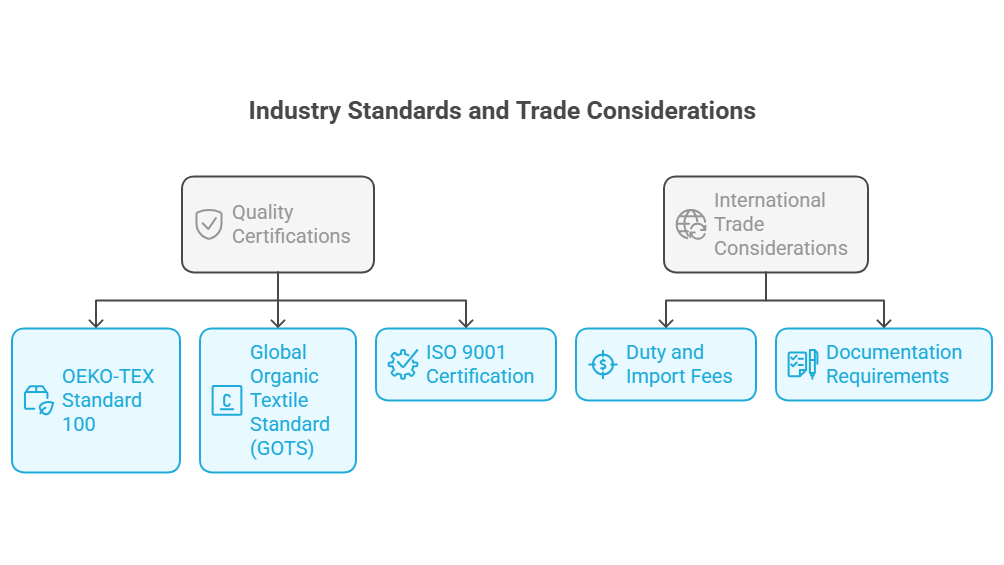
Quality Certifications to Look For
OEKO-TEX Standard 100:
- Tests for harmful substances
- Ensures fabric safety
- Important for children’s clothing
Global Organic Textile Standard (GOTS):
- Organic fiber content verification
- Environmental and social criteria
- Premium pricing but eco-friendly
ISO 9001 Certification:
- Quality management standards
- Consistent production processes
- Reliable supplier indicator
International Trade Considerations
Duty and Import Fees:
- European laces: 15-20% duty
- Asian imports: 10-15% duty
- Calculate total landed cost
- Factor in shipping time
Documentation Requirements:
- Commercial invoices
- Packing lists
- Country of origin certificates
- Fabric content declarations
Conclusion
Beaded lace fabric represents the perfect fusion of traditional artisanship and modern innovation, offering you endless possibilities for creating stunning fashion pieces and elegant home decor. Throughout this guide, we’ve explored how these remarkable textiles can transform your projects from ordinary to extraordinary through their unique combination of delicate patterns and shimmering embellishments.
The key to success with beaded lace lies in understanding the relationship between quality, application, and care. When you choose the right base material – whether polyester for durability or cotton blends for breathability – you set the foundation for projects that will maintain their beauty over time. The strategic placement of beads, crystals, and sequins doesn’t just add visual appeal; it creates dimensional surfaces that interact with light in captivating ways.
Key Takeaways for Your Next Project:
- Quality Assessment: Always examine bead security and base fabric integrity before purchasing. Look for reinforced edges and consistent bead spacing.
- Project Planning: Calculate your yardage needs carefully, adding 15% extra for pattern matching. Use SKU codes to ensure consistent quality across multiple orders.
- Care and Maintenance: Proper handling extends fabric life significantly. Hand washing, flat drying, and careful storage prevent damage to delicate embellishments.
- Cost Optimization: Balance your budget by mixing quality levels strategically. Use premium beaded lace for focal points while incorporating mid-range options for larger areas.
- Trend Awareness: Stay current with color trends and pattern innovations. The move toward bold color combinations and 3D textures opens new creative possibilities.
Professional Recommendations:
For beginners, start with polyester-based beaded fabrics priced between $25-75 per yard. These offer good quality while being forgiving to work with. As your skills develop, invest in premium silk-based options for special projects where luxury and durability matter most.
Consider building relationships with suppliers who offer sample programs and bulk pricing. This approach not only reduces costs but ensures consistency across multiple projects. Many successful designers report that establishing these partnerships was crucial to their business growth.
The beaded lace fabric market continues evolving with sustainable practices and innovative attachment methods. By staying informed about fabric industry trends and quality standards, you position yourself to make informed decisions that enhance both your creative output and business success.
Whether you’re crafting a once-in-a-lifetime bridal gown or adding elegance to everyday home furnishings, beaded lace fabric offers the versatility and sophistication to bring your vision to life. The investment in quality materials pays dividends through improved project outcomes, customer satisfaction, and your own creative fulfillment.
Take Action on Your Next Project:
Ready to put this knowledge into practice? Use our suite of fabric planning tools to ensure project success:
- Calculate exact fabric needs with our yardage calculator
- Find perfect color combinations using our color matching tool
- Compare costs across quality levels with our cost comparison tool
- Test your expertise with our fabric knowledge quiz
Remember that working with beaded lace is both an art and a skill that improves with practice. Each project teaches valuable lessons about material behavior, construction techniques, and design possibilities. Embrace the learning process, and soon you’ll be creating pieces that showcase the full potential of these remarkable textiles.

